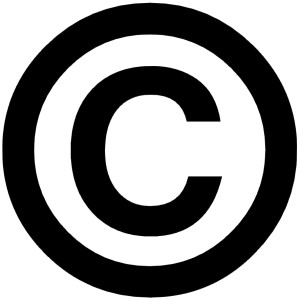 In trying to finish this novel, I really like getting feedback from readers I know read a lot of my genre. I think getting the feedback now will help me create a better story.
In trying to finish this novel, I really like getting feedback from readers I know read a lot of my genre. I think getting the feedback now will help me create a better story.
Unfortunately, you never know. With the way the Internet is now, it would make one weary about putting their unfinished work out there to possibly be stolen. No artist wants to work hard to put their masterpiece together, and then someone steals it and reaps the rewards. Even the most trusting can be shady.
So, I did some research on Copyrights and protecting my work, and found some great information I want to share.
First and foremost, Copyright is protection of a creator’s original work, be it literary, intellectual, or any array of other artistic expressions. The best part about a copyright, though, is that it’s an automatic thing. The moment your work is on paper (to include sketches) or recorded, it’s protected. The U.S. Copyright Act distinctly states “original works of authorship fixed in a tangible medium of expression,” which opens of the doors for all types of expressions and mediums that may not even exist yet. Pretty powerful information.
But, I learned even more which I am going to breakdown.
Duration of Protection. Protection is not forever, BUT when it runs out, you and I would likely not be around to see it. For works created on and after January 1st, 1978, protection begins that day until 70 years AFTER the creator dies. Although, if the work was for hire or completed anonymously or under a pseudonym, protection is 95 years after publication, or 120 years from creation – whichever is shorter.
Registering Your Work. It may seem pointless to register your work since it hasn’t been required since March 1989, but registration is like protection with a punch. By registering with the U.S. Copyright Office, it makes everything a public record. Being a public record gives the creator legal protection against infringement of their work. This could mean between $250 and $150,000 in damages plus attorney fees if someone uses the work without permission. If someone robbed your home, you’d want retribution – get your retribution and go to the U.S. Copyright Office website to get registered.
Notice Markings. Although Notice markings are also not required, they should still be used. Seeing them act as a reminder to others of the copyright. Sometimes people forget or do not realize the work is under copyright despite not being registered. To properly mark work with a notice, there are three parts to it:
1. © symbol, the word “COPYRIGHT” or abbreviation “Copr”
2. Year first created
3. Owner of copyright
Example: Copyright 2015 Ameehsal MindSpeaka
Items excluded from copyright protection. Among what copyright does not protect are ideas, procedures, principles, even devices. So if an idea hasn’t been put it into some tangible form of expression, anyone can come along and use it. I thought it was interesting when I read that even recipes can be used and published without permission, for the most part, because it is considered a process (although I would still recommend asking permission before using).
From the Copyright Act:
“In no case does copyright protection for an original work of authorship extend to any idea, procedure, process, system, method of operation, concept, principle, or discovery, regardless of the form in which it is described, explained, illustrated, or embodied in such work.”
Works in the Public Domain. Anything considered in the Public Domain is no longer covered by copyright. That is works created prior to 1923 and those with registrations between 1923 and 1963 that have not been renewed. It also includes generic information (facts, numbers, and ideas), lapsed/un-renewed copyrights (which was required prior to 1978), works prior to March 1989 without proper notice, and U.S. Federal Government works.
The First Sale Doctrine. Physical ownership does not equal a copyright. What I mean is, just because I own a copy of what someone else created, doesn’t mean I can do with it what I please. Technically, only the copyright owner can reproduce, perform, etc. the work legally. This paramount to know, because without acquiring permission to use the work first, the copyright owner can sue for copyright infringement. That means even sampling or using someone’s art and giving them credit for it, can lead to legal ramifications if the permission to do so wasn’t given. When in doubt, ask for permission.
Remember that a copyright is not the same as a trademark or patent. I would recommend looking those up, too, for more information on trademark or patent protection. Also, this information only pertains to copyright laws here in the U.S. and not internationally. For more information on copyrights, go to Copyright.gov.
If this was any help to you, I would love to hear about it! Leave a comment about it or anything you think I’ve missed.
~MindSpeaka
Photo Credit: Copyright France

